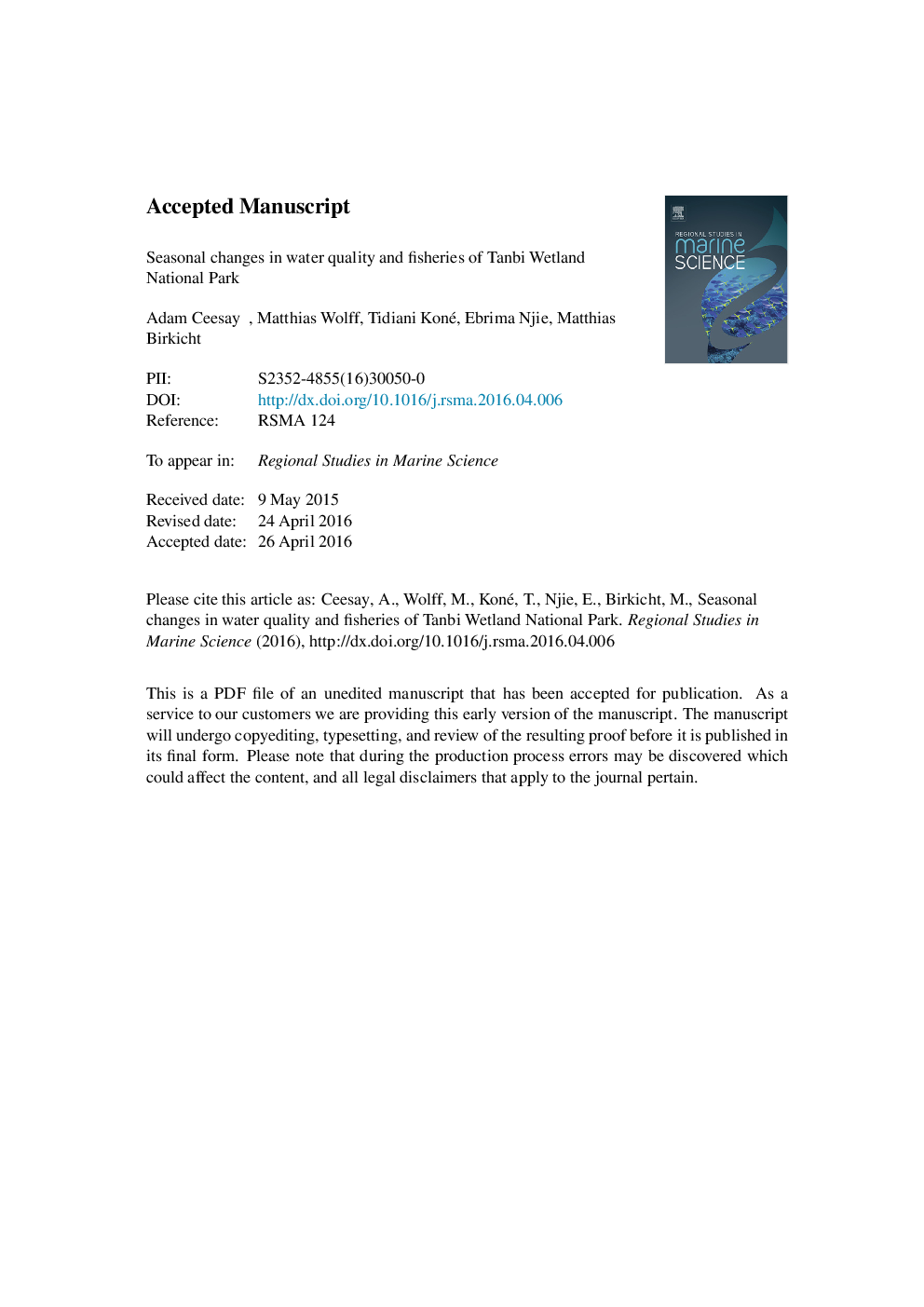| Article ID | Journal | Published Year | Pages | File Type |
|---|---|---|---|---|
| 5758136 | Regional Studies in Marine Science | 2016 | 29 Pages |
Abstract
This research was aimed at studying seasonal changes in water quality of Tanbi Wetland National Park (TWNP) and how these interact with the different land use types to influence fish assemblage. Physicochemical properties were measured in situ with a portable YSI multiprobe watermeter and fish sampling was done using a seine net of 100Ã4Â m. To assess nutrient (nitrogen and phosphorus) input and chlorophyll a concentration (chl-a) in TWNP, spectrophotometry (fluorescence method) was applied. Subjecting the main water variables to a Principal Components Analysis (PCA) indicated a strong correlation between water temperature and pH, phosphate and pH, as well as water temperature and phosphate. A further Multidimensional Scaling (MDS) of the environmental variables indicated salinity as the main water variable influencing fish species richness in TWNP. Except at the settlement and agricultural zones, changes in fish assemblage appear not to be influenced by the specific land use types. As judged from a three-decade time series of rainfall and atmospheric temperatures, seasonal variations in environmental conditions have intensified and are negatively influencing fish assemblage in TWNP.
Related Topics
Physical Sciences and Engineering
Earth and Planetary Sciences
Oceanography
Authors
Adam Ceesay, Matthias Wolff, Tidiani Koné, Ebrima Njie, Matthias Birkicht,
